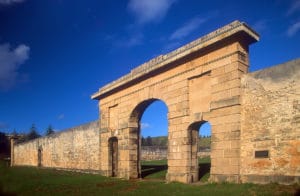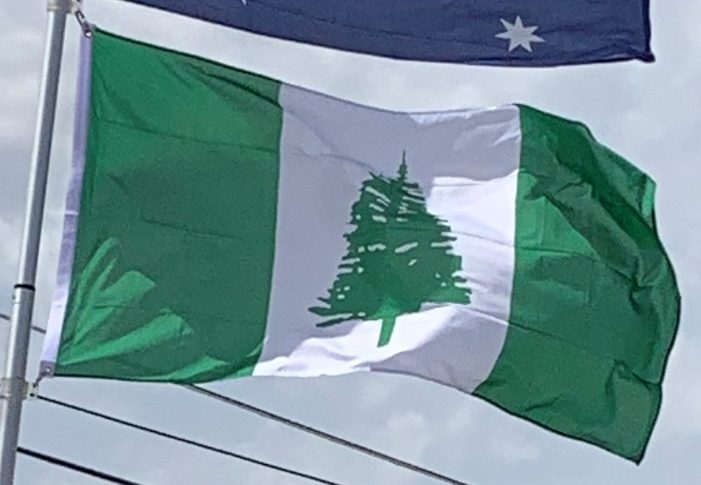Robert Watson (1756–1819), harbormaster, arrived with the First Fleet as quartermaster of HMS Sirius, and was still serving in that capacity when the ship was wrecked at Norfolk Island in 1790. Next year he obtained and cultivated a grant of sixty acres on the island.
As early as 1794, Lieutenant-Governor of New South Wales Francis Grose suggested its closure as a penal settlement, as it was too remote and difficult for shipping and too costly to maintain. The first group of people left in February 1805, and by 1808 only about 200 remained, forming a small settlement until the remnants were removed in 1813. A small party remained to slaughter stock and destroy all buildings, so that there would be no inducement for anyone, especially from other European powers, to visit and lay claim to the place. From 15 February 1814 to 6 June 1825 the island was abandoned.
Second Penal Settlement (1824–1856):
In 1824 the British government instructed the Governor of New South Wales, Thomas Brisbane, to occupy Norfolk Island as a place to send “the worst description of convicts”. Its remoteness, previously seen as a disadvantage, was now viewed as an asset for the detention of recalcitrant male prisoners. The convicts detained have long been assumed to be a hardcore of recidivists, or ‘doubly-convicted capital respites’ – that is, men transported to Australia who committed fresh colonial crimes for which they were sentenced to death, but were spared the gallows on condition of life at Norfolk Island.

The British government began to wind down the second penal settlement after 1847, and the last convicts were removed to Tasmania in May 1855. The island was abandoned because transportation from the United Kingdom to Van Diemen’s Land (Tasmania) had ceased in 1853, to be replaced by penal servitude in the UK.
Settlement by Pitcairn Islanders (1856–present):
The next settlement began on 8 June 1856, as the descendants of Tahitians and the HMS Bounty mutineers, including those of Fletcher Christian were resettled from the Pitcairn Islands, which had become too small for their growing population. On 3 May 1856, 193 people had left Pitcairn Islands aboard the Morayshire. On 8 June 194 people arrived, a baby having been born in transit. The Pitcairners occupied many of the buildings remaining from the penal settlements, and gradually established traditional farming and whaling industries on the island. Although some families decided to return to Pitcairn in 1858 and 1863, the island’s population continued to grow. They accepted additional settlers, who often arrived with whaling fleets.
20th Century:
The Parliament of the Commonwealth of Australia accepted the territory by the Norfolk Island Act 1913 subject to British agreement; the Act received the assent on 19 December 1913. In preparation for the handover, a proclamation by the Governor of New South Wales on 23 December 1913 (in force when gazetted on 24 December) repealed “all laws heretofore in force in Norfolk Island” and replaced them by re-enacting a list of such laws. Among those laws was the Administration Law 1913 (NSW), which provided for appointment of an Administrator of Norfolk Island and of magistrates, and contained a code of criminal law.
